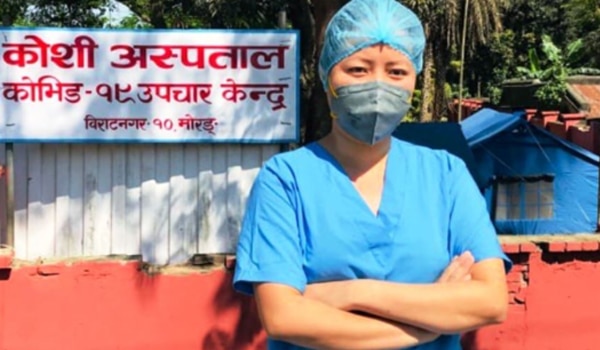
“Evidence shows that women and girls are disproportionately affected during any humanitarian situation and their health problems are often unmet, face violence and sometimes lead to the situation where their lives are in danger due to lack of medical care during childbirth, adoption of harmful practices in terminating unwanted pregnancies. To prevent these situations, the government should devise an alternate plan where women have full access to health service they need but at the same time have minimal contact with health facility itself so that both service providers and clients are safe. In doing so, it should lax some legal provisions, try some approaches which have been proven effective elsewhere but yet to be implemented in Nepal in such scale. There can be different avenues in delivering critical service using telemedicine, strengthening outreach with necessary precautions, recognizing the pharmacies to deliver the set of health services such as abortion and task shifting of the service to the lower facilities so that the pressure in higher facilities is reduced. Government should not hesitate in coming out from their customary practice because the situation is extraordinary and our response should commensurate it. Here, I would like discussing two critical services: family planning and abortion services.
“Unsafe abortion is the third leading cause and accounts for 7% of maternal death in Nepal. Abortion service is time-sensitive service and both delay and denial will have profound negative consequences in women’s health including death. Although government recognized abortion service as an essential health service, many factors such as travel restriction, health facilities turning to Covid-19 dedicated hospital, lack of women’s autonomy in seeking reproductive health services may restrict women and girl in seeking abortion care. As per 2014 estimates, about 323,000 abortions take place every year and 58% of these are unsafe. However, we have to differentiate between legal abortion and safe abortion service. According to the abortion-related law, this 58 % are unsafe but if we compare against the definition of the World Health Organization (WHO), the number of unsafe abortions should be less. The current provision in Nepal allows the abortion at the listed site by the listed provider with appropriate technology and only these are considered as safe. However, WHO recognizes abortion is safe if they are done using the recommended method appropriate to the gestation and person supporting or provide service is trained. So, the provision of the listed site is unnecessary. When it comes to terminating pregnancy up to 10 weeks using pills, the listed site doesn’t add any significant benefit in the process. The idea of listed provider and listed site is dated back to 2002 when Nepal had just legalized the abortion service, medical abortion was not introduced and much evidence was not produced about the safety of other procedures. The new evidence also shows women can safely terminate early pregnancy without visiting the health facilities and without the physical presence of health workers. Health workers can virtually support via telephone basically in assessing the eligibility, right process of using the pills, assessing the termination of pregnancy and ensuring post-abortion contraceptive. If women can correctly recall her last menstruation date, then women can take pills from pharmacies and completes the abortion at home. Different pieces of evidence show that women are likely to be conservative in recalling their last menstrual date and a slight error in estimating the gestational age might not pose a big risk, as the dose of pills until 10 weeks of pregnancy is same. The government should lax the law of the listed site and providers for at least during this pandemic and let the registered pharmacies run by the medical professional, paramedics, private hospital, polyclinics dispense the legally registered drugs with clear instruction of its use. Simultaneously, partners can assist in providing necessary clinical orientation and support to the service providers, orienting female community health volunteers, supplying commodities, etc. There are different online platform, apps that can guide the paramedics, pharmacy workers or even the women in providing and obtaining comprehensive abortion care.”
FULL REPORT: Swasthyakhabar, by Navaraj Bhattarai + PHOTO



